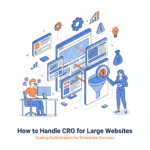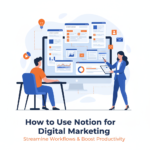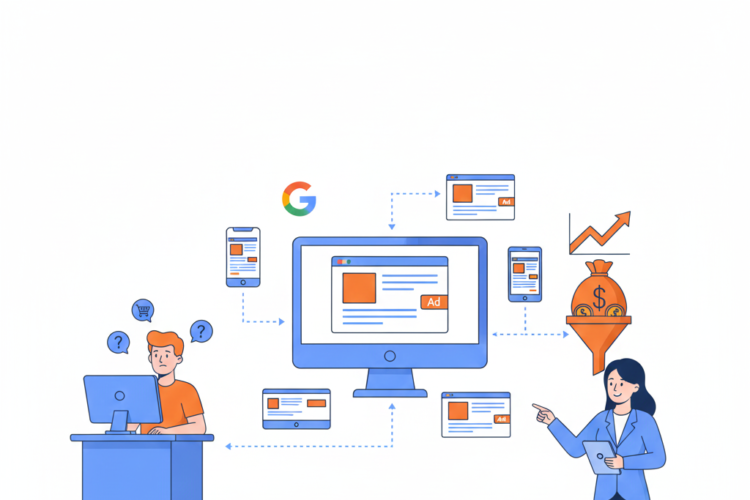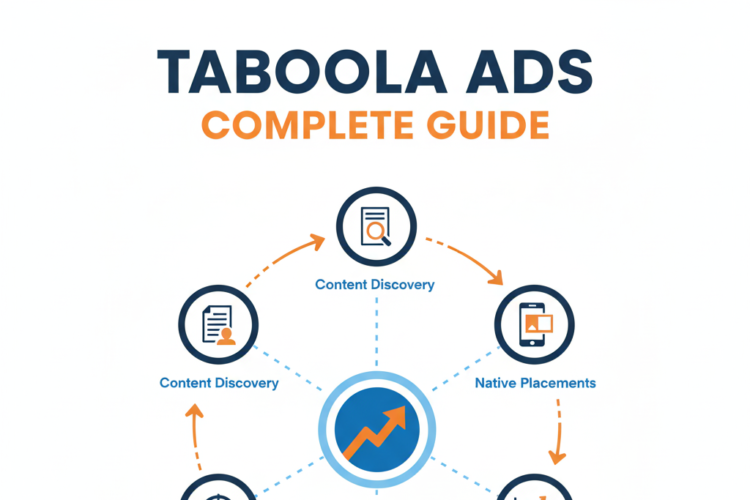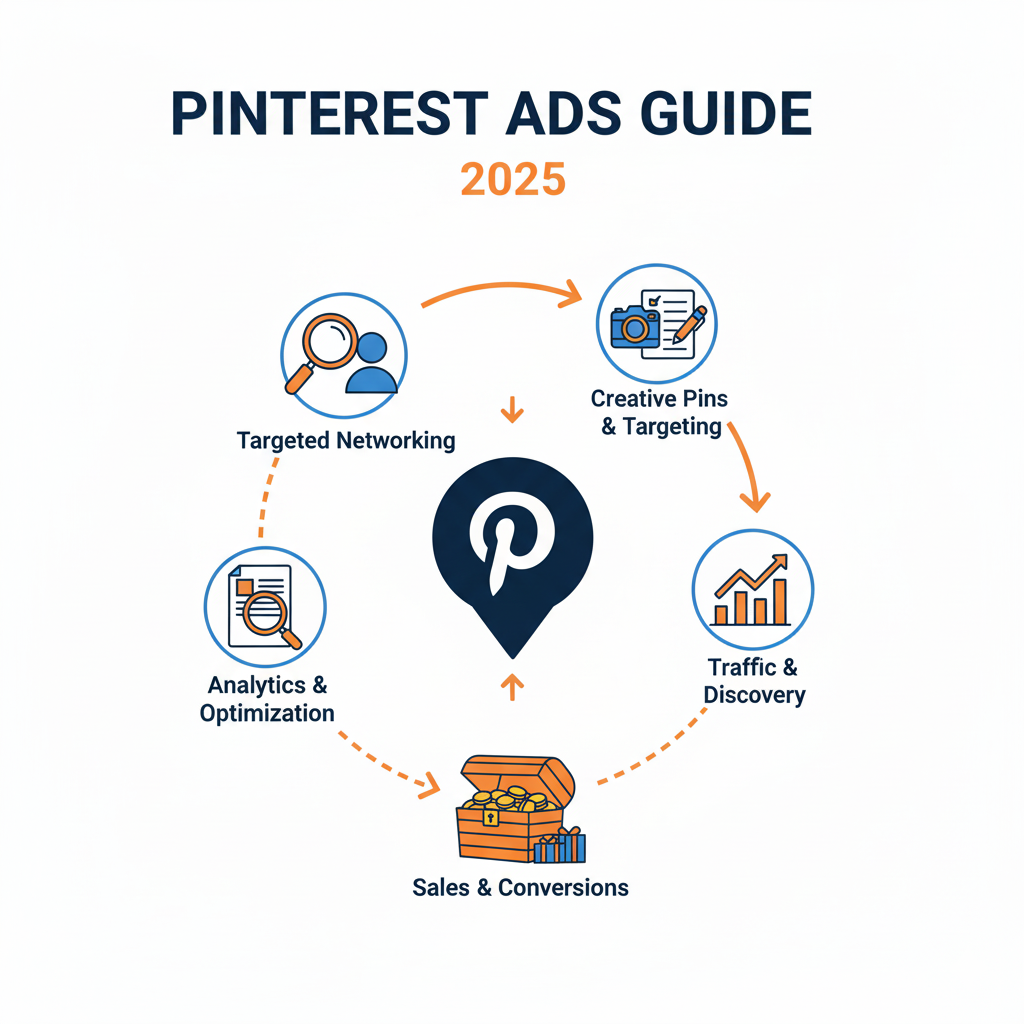
Pinterest Ads Guide 2025: How to Create, Optimize, and Scale Campaigns That Convert
Introduction
Pinterest has evolved from a visual discovery platform into a powerful advertising engine. Once known primarily as a place for inspiration, it has become one of the most conversion-driven social platforms, especially for lifestyle, fashion, food, home décor, wellness, and e-commerce brands.
As of 2025, Pinterest boasts over 500 million monthly active users, with more than 80% of them actively seeking to plan or purchase. That’s what makes Pinterest unique — users don’t just scroll; they search with intent.
Pinterest Ads combine visual inspiration, search intent, and discovery behavior — making it a hybrid between Google Ads (search intent) and Instagram Ads (visual engagement).
In this guide, you’ll learn everything about Pinterest Ads — from setup to strategy, optimization, and advanced techniques to scale your campaigns successfully.
Why Advertise on Pinterest in 2025
Before jumping into campaign setup, let’s understand what makes Pinterest such a strong advertising platform:
-
High Purchase Intent – 85% of weekly Pinners have made a purchase based on Pins they saw from brands.
-
Longer Content Lifespan – A Pin can drive engagement and traffic for months, unlike ads that vanish in hours on other platforms.
-
Visual Search Engine – Pinterest’s search-driven algorithm allows you to target users based on what they are actively looking for.
-
Discovery Platform – People come to Pinterest with an open mind, which makes it easier for new brands to gain visibility.
-
Positive User Mindset – Pinterest is considered a “positive space,” leading to higher engagement and brand favorability.
-
Lower Competition Compared to Meta Ads – CPM and CPC are typically lower, making it cost-effective.
Types of Pinterest Ads
Pinterest offers multiple ad formats designed for awareness, engagement, and conversion goals.
1. Standard Pins (Image Ads)
-
These are simple, single-image ads that appear like regular Pins in the feed or search results.
-
Best for: Awareness campaigns, product showcases, and blog promotions.
-
Tip: Use vertical images (2:3 aspect ratio) for better engagement.
2. Video Pins (Video Ads)
-
Capture attention with short videos in users’ feeds.
-
Ideal length: 6–15 seconds for mobile.
-
Best for: Product demos, storytelling, brand awareness.
-
Tip: Include subtitles and clear branding in the first 3 seconds.
3. Carousel Ads
-
Contain 2–5 swipeable images in a single ad.
-
Great for: Showing multiple product angles or telling a sequential story.
-
Example: A fashion brand can show one outfit per slide.
4. Shopping Ads
-
Pull directly from your product catalog.
-
Each product image becomes a clickable ad that leads to your product page.
-
Best for: E-commerce brands.
-
Integration: Pinterest connects directly with Shopify, WooCommerce, and other eCommerce platforms.
5. Collections Ads
-
Combine lifestyle images with product images below it.
-
Best for: Retail, furniture, or home décor brands that want to show products in context.
6. Idea Ads (formerly Story Pins)
-
Multi-page, immersive experiences similar to Instagram Stories.
-
Use for tutorials, recipes, DIYs, or brand storytelling.
7. App Install Ads
-
Promote mobile apps directly.
-
Users can install the app without leaving Pinterest.
Pinterest Ads Campaign Objectives
Pinterest Ads Manager offers objectives aligned with your marketing funnel.
Awareness Stage
-
Brand Awareness: Maximize reach and impressions.
-
Video Views: Get more people to watch your video ads.
Consideration Stage
-
Traffic: Drive visitors to your website or landing page.
-
App Install: Promote app downloads.
Conversion Stage
-
Conversions: Encourage users to take specific actions like sign-ups or purchases.
-
Catalog Sales: Use product feed for dynamic retargeting and personalized shopping ads.
Pinterest Targeting Options
Pinterest’s targeting system combines demographics, interests, search intent, and behavioral data — making it powerful for both prospecting and retargeting.
1. Demographic Targeting
-
Age, gender, location, language, and device.
2. Interest Targeting
-
Choose from categories like “Home Décor,” “Beauty,” “Travel,” etc.
-
Pinterest’s AI automatically finds users who frequently engage with similar Pins.
3. Keyword Targeting
-
Works similar to Google Ads.
-
Example: A furniture brand can target keywords like “modern sofa” or “home office setup.”
4. Audience Targeting
-
Customer Lists: Upload your email list for retargeting.
-
Website Visitors: Retarget users who visited your site (requires Pinterest Tag).
-
Engagement Audience: Retarget users who engaged with your Pins.
-
Actalike Audiences: Pinterest’s version of Lookalike audiences — find users similar to your best customers.
How to Set Up a Pinterest Ad Campaign
Here’s a step-by-step process:
Step 1: Create a Business Account
-
Visit ads.pinterest.com
-
Convert or create a business profile.
Step 2: Install Pinterest Tag
-
The Pinterest Tag tracks conversions, similar to the Meta Pixel.
-
Helps you measure traffic, sign-ups, purchases, etc.
Step 3: Set Your Campaign Objective
-
Choose awareness, consideration, or conversion based on your goal.
Step 4: Define Your Ad Group
-
Choose targeting (interests, keywords, audiences).
-
Set placements (Browse, Search, or All).
-
Define budget and schedule.
Step 5: Create Your Pin Ad
-
Upload creative (image/video).
-
Add title (up to 100 characters) and description (up to 500 characters).
-
Include destination URL.
Step 6: Launch and Monitor
-
Once approved, ads go live within 24 hours.
-
Use Analytics to monitor impressions, CTR, saves, and conversions.
Pinterest Ads Creative Best Practices
1. Use Vertical Images (2:3 Ratio)
Pinterest’s interface favors tall images — they take up more screen space and perform better.
2. Include Text Overlay
Use bold, legible text to communicate key benefits — especially for mobile users.
3. Focus on Lifestyle, Not Just Product
Show your product in use or as part of a desirable lifestyle.
4. Use Branding in Every Creative
Include your logo subtly; Pinterest recommends placing it near the top or bottom edge.
5. Strong CTA (Call-to-Action)
Examples:
-
“Shop the Look”
-
“Try This Recipe”
-
“Download the Guide”
6. Avoid Overly Promotional Tone
Pinterest is inspiration-first. Ads that blend naturally with organic Pins perform best.
Pinterest Ads Bidding and Budgeting
Pinterest offers three bidding strategies:
-
Automatic Bidding: Pinterest optimizes delivery to get the most results within your budget.
-
Custom Bidding: You set the maximum bid per result (CPC, CPA, or CPM).
-
Conversion Optimization: Pinterest’s algorithm adjusts bids automatically to drive conversions.
Budget Tips:
-
Minimum daily budget: $2 for awareness or $5 for conversion campaigns.
-
Start small, test creatives and keywords, then scale winners.
Pinterest Analytics: Key Metrics to Track
-
Impressions – How often your ad was shown.
-
Saves – Indicates user interest and intent to revisit.
-
Outbound Clicks (CTR) – Measures traffic to your website.
-
Engagement Rate – Combines saves, clicks, and close-ups.
-
Conversions – Tracked through Pinterest Tag (purchases, sign-ups).
-
ROAS (Return on Ad Spend) – Key for evaluating eCommerce performance.
Advanced Pinterest Advertising Strategies
1. Keyword Layering
Combine broad and long-tail keywords to capture both discovery and intent.
2. Visual Consistency
Maintain a cohesive aesthetic across your Pins to build brand recognition.
3. Sequential Retargeting
-
Step 1: Awareness campaign.
-
Step 2: Retarget with product Pins.
-
Step 3: Conversion ad for cart completion.
4. Leverage Seasonal Trends
Pinterest is heavily seasonal — users plan for holidays and events months ahead.
Use trend insights from Pinterest Trends Tool to plan campaigns.
5. Use Idea Ads for Tutorials
Brands that educate convert better — “how-to” content performs exceptionally well.
6. Dynamic Retargeting
Connect your product feed so Pinterest can automatically show users the exact items they viewed on your site.
Pinterest Ads for E-Commerce
Pinterest is one of the most underrated eCommerce advertising platforms.
-
Integrate Shopify or WooCommerce.
-
Use Shopping Ads and Collections Ads to drive product discovery.
-
Enable Verified Merchant Program (VMP) for enhanced trust.
-
Combine organic + paid Pins for maximum visibility.
-
Use Rich Pins to automatically sync product prices, availability, and descriptions.
Common Mistakes to Avoid
-
Ignoring keyword optimization — Pinterest is a search engine, not just social media.
-
Using square images — verticals perform best.
-
Not installing the Pinterest Tag.
-
Skipping audience segmentation.
-
Overly branded creatives that lack inspiration.
Future of Pinterest Ads (2025 and Beyond)
Pinterest continues to evolve with:
-
AI-driven visual search: Matching products based on image recognition.
-
AR Try-On: Virtual product experiences for makeup, furniture, and apparel.
-
Shoppable Videos: Seamless in-video purchasing.
-
Enhanced Predictive Targeting: AI models that predict future user behavior.
As AI personalization deepens, Pinterest will merge inspiration with instant purchase ability — making it a major player in visual commerce.
Conclusion
Pinterest Ads are a perfect blend of discovery, intent, and inspiration — a rare combination in digital marketing.
For brands that want to reach users in the planning and dreaming stage, Pinterest offers a unique advantage: it influences decisions before the purchase intent peaks.
Whether you’re running e-commerce, B2C services, or lifestyle content, mastering Pinterest Ads in 2025 means combining creative storytelling, keyword strategy, and behavioral insights.
If you build campaigns that inspire first and sell second, your Pinterest Ads will not just get clicks — they’ll drive loyal, high-intent customers who convert again and again.
Author
